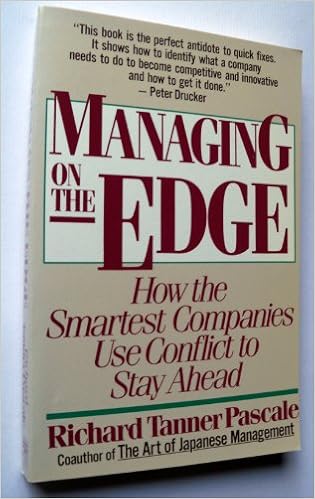 If anyone ever puts together a list of the auto industry’s greatest hits, it would have to include the 1986 Ford Taurus. That car reversed the fortunes of the Ford Motor Company, set a styling standard that would last for a decade, and was produced by a new process. Ford’s first two non-family CEOs, Phillip Caldwell and Donald Petersen, set up Team Taurus to be a collaborative design process.
If anyone ever puts together a list of the auto industry’s greatest hits, it would have to include the 1986 Ford Taurus. That car reversed the fortunes of the Ford Motor Company, set a styling standard that would last for a decade, and was produced by a new process. Ford’s first two non-family CEOs, Phillip Caldwell and Donald Petersen, set up Team Taurus to be a collaborative design process.
They chose an engineer named Lew Veraldi to lead the team, and he spent his days knocking down the barriers between disciplines at Ford. For the first time in living memory, designers were talking to engineers early enough in the process to eliminate rework later. For the first time in living memory, the CEO was urging a design team to go just a little further.
Team Taurus had a dramatic effect on the company and on its culture, but this story does not have a fairytale ending. The kudzu of Ford’s culture grew over Team Taurus. By the time Alan Mulally took over at Ford, no one could even find records of how Team Taurus had worked. They could have found out by reading Managing on The Edge by Richard Pascale.
They probably didn’t. That book is one of the best management books I’ve ever read, and probably the one that’s least familiar to other business book readers.
Business book authors tend to believe that if they write a great book, it will be a success. Richard Tanner Pascale is the counter-argument. He was the co-author with Anthony Athos of The Art of Japanese Management. That book covered much the same ground as In Search of Excellence and came out a year earlier. Pascale was also a co-author on a book about the laws of nature and how they applied to business, called Surfing the Edge of Chaos.
All those books are excellent. None of them had great sales success, and very few business book readers will mention any of the three in their list of top books.
When I checked Amazon on the morning that I wrote this, Managing on The Edge was out of print. There were only two copies available from third-party sellers. Don’t let that stop you. This is a book worth having on your shelf for the insights that it has and the clarity of the writing.
Pascale talks about what he calls the fit/split paradox, which covers many of the things that Clayton Christensen would cover in his books seven years later. Pascale wrote about the need for contention and the necessity to disturb equilibrium.
The Ford Team Taurus story is used as an example of crisis and transformation. He holds up General Electric as an example of achieving corporate transformation without a crisis. That’s the story of Reg Jones, the best CEO and most admired businessperson in the land, who’s hardly remembered today, because he proceeded Jack Welch.
Pascale also describes case studies from Citicorp and Hewlett-Packard, which he calls “living dangerously.” His concluding chapter is “Two Faces of Learning: General Motors and Honda.” The contrast is striking. Yes, Honda is the good example and GM is the bad example.
The conclusion, “The Question Is the Answer,” is worth the price of the book. Pascale points out that successful, innovating, and changing companies didn’t get that way automatically or through a quick fix. “Change only happened when each company’s leadership adopted new ways of thinking.” Pascale goes on to talk about how they replaced dicta with questions. Then he says this.
“They asked questions not merely to generate answers, but to reveal what is possible. Rather than just solve problems, they alter their relationships with problems to create larger opportunities for themselves and their companies.”
In A Nutshell
So, now you know. Managing on The Edge is one of the best business books ever. And Richard Tanner Pascale is one of the best business authors ever to draw breath.
Note: Thanks to Michael Wade for reminding me of this excellent book and author.
-o0o-
What’s the fastest way to learn the big ideas from a great business book? Book summaries. Check out summaries from The Business Source, where you can watch, read, or listen to the big ideas from a great book in under 20 minutes.

